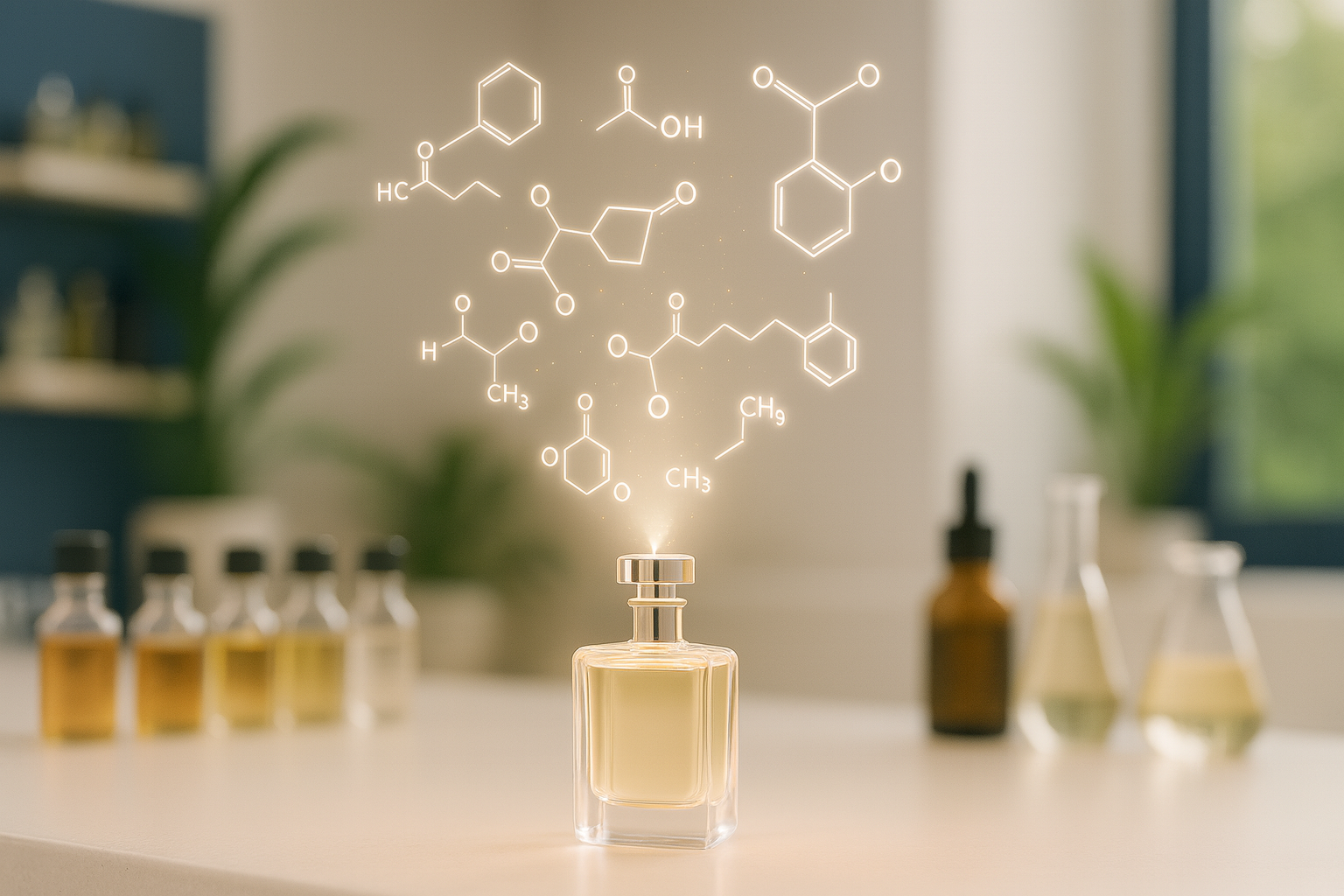Fragrance Chemistry - How Molecules Create Unique Perfume Profiles
From Natural Extracts to Molecular Fragrance
For centuries, perfumers worked only with what they could extract: rose, jasmine, sandalwood, ambergris. Distillation, enfleurage, and tincturing gave them raw materials but limited variety. This changed in the nineteenth century when organic chemists began isolating and creating molecules:
Coumarin (1868), the first synthetic perfume material, found in tonka beans, introduced the sweet hay-like tonality of fougères.
Vanillin (1874) made gourmand sweetness accessible and affordable at scale.
Ionones (1893), violet like molecules that gave an ethereal floral quality no natural extract could achieve.
These discoveries transformed fragrance profiles. Suddenly, perfumers were not bound to the limits of nature. They could create olfactory illusions: a jasmine with more radiance, a leather that smelled both smoky and clean, or the abstract aldehydic sparkle that defined Chanel No. 5 in 1921.
How Molecular Structure Shapes Scent
Perfume and chemistry are inseparable because the smallest molecular change can alter perception completely. In perfume chemistry, even subtle variations rewrite the story of a fragrance:
Add a methyl group and a woody note leans fruity.
Move a double bond and a fresh green molecule takes on metallic intensity.
Change stereochemistry, the three dimensional shape of a molecule, and the smell can flip entirely. One version of carvone is spearmint, its mirror image is caraway. One version of limonene is orange, the other turpentine.
Unlike pharmaceutical or industrial chemistry, scent and chemistry meet at the level of experience. Fragrance chemistry is not only about stability or efficiency but also about volatility, longevity, diffusion, and the emotions these molecules evoke. It is chemistry with an aesthetic dimension.
The Era of Molecular Perfumes
By the late twentieth century, molecules themselves became the star. Iso E Super, Ambroxan, and Cashmeran each defined entire genres of molecular fragrance, scents that celebrate their chemical identity rather than hide it within naturals. Transparent, abstract, and often described as skin like, these works shifted the conversation. Fragrance no longer had to mimic nature. It could stand on its own as a composition of molecules.
Mapping the Odor Space Ahead
Today, a new frontier is emerging. With tools like Arome AI, chemists can explore novel structures in silico, predicting odor, stability, and even biosynthetic feasibility before they exist in the lab. What once depended on lucky accidents in synthesis can now be mapped with intent.
At the same time, groups like Osmo are working to chart the odor space itself, an attempt to define the multidimensional map of how molecular structure relates to smell. Combined with AI driven molecule design, this opens a possibility we have never had before: to navigate odor space deliberately, choosing unexplored regions and filling them with new materials that extend perfumery’s vocabulary.
Over the last century, perfume chemistry did not just expand the perfumer’s palette. It redefined the very language of fragrance. Now, computational design, biosynthesis, and odor space mapping point toward a future where molecules are not merely discovered but designed with precision. The question is not whether new odorants can be created, but how they will reshape aesthetics, sustainability, and the cultural meaning of fragrance itself.

